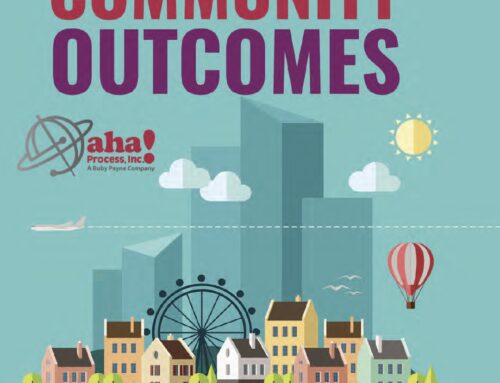 Below is a letter I just sent out to the gubernatorial candidates here in Ohio.
Below is a letter I just sent out to the gubernatorial candidates here in Ohio.
Dear XXXXX,
There are interwoven poverty related problems in most communities in America. While no community is perfect, there are certain places where progress is being made. Why? What have they done?
You will find in this package two books, Bridges Across Every Divide and the new, fresh-from-the-printer fifth edition of Bridges Out of Poverty, first published two decades ago.
In the years since, the concepts found in Bridges Out of Poverty have spread; there are now Bridges communities in forty-eight states, several sites in Canada and sites in five other countries.
People can be impoverished for many reasons, but telling people what to do is like pouring water on a rock; it looks wet, but nothing soaks in. If instead you set up an approach where individuals investigate their own lives, they can realize why they are in poverty, and armed with tremendous agency and self-awareness, the majority are now successful in leaving poverty.
The model in Bridges has been used not just in relying on and trusting people in poverty to make their own arguments for change but by providing community support to remove the barriers that are beyond the reach and power of individuals.
The Bridges model works in police–community relations, workforce development, prisons and reentry, health and healthcare, social services, faith communities, and with first-generation, low-income students entering higher education.
The organizations that use Bridges concepts also benefit by applying Bridges concepts to improve their outcomes.
Bridges is a very organic, bottom-up, grassroots-driven process, and it will look different in every community as it responds to the needs of every community. That is because it respects the voices of all, but for the first time in many communities, it encourages those most impacted, the poor and working poor, to have a real voice in developing solutions. This process is not folks sitting around speculating what life is like in poor neighborhoods based on census data; Bridges is based on the input of the people who live this every day.
Bridges communities typically develop a collaborative to address the most difficult barriers that under-resourced families face. Poverty is manifested differently in every community; Bridges supports community members to name and work on problems that are relevant to them and create innovative solutions. This model is used by secular groups such as United Way, faith-based organizations like The Society of St. Vincent de Paul, and governmental agencies.
Many communities report a financial return on investment as people from all classes participate in problem solving and creating communities where everyone can live well.
As you develop policy positions on a variety of issues, I sincerely believe you will find in these two books ideas and approaches that not only work, but also open doors on a variety of innovative solutions to societal problems: Read Bridges Out of Poverty first for the in-depth background and Bridges Across Every Divide second, as it gives tips on how this methodology intersects with government.
If you have further questions or wish to meet in person, please feel free to contact me. I am acting in a nonpartisan manner and am only interested in furthering policy work.
With warmest regards,
Gene Krebs
This is a sample letter. Your letter might be different.
The process is: Each state’s election officer (often the secretary of state) will have on their website the addresses for the candidates. A cautionary note is that all mailings to their campaign address listed on finance filings will be opened by the campaign accountant, or worse, their finance director, who probably views policy as a hindrance to raising money and will not pass on the books. You need to find their physical address. If you can’t, then the fiscal address will suffice.
Using a large padded envelope, mail a copy of the fifth edition of Bridges Out of Poverty and Bridges Across Every Divide to every gubernatorial candidate. Fold the introductory letter lengthwise and insert into the front pages of one of the books. Include your business card as a bookmark in each book.
Will these books be read by the candidate? Well, probably not. However, they will be handed off to the person in charge of doing policy for that candidate to see what they can glean from the books to campaign on. Unfortunately, they will first look for an easy framing sentence, then look for the policy that backs it up. That’s just the way it is. But they might invite you in for a discussion. If so, bring a recent graduate of Getting Ahead in a Just-Gettin’-By World.
My challenge to every certified trainer in every state and province and to every organization that uses Bridges in their work is to mail one copy of each book, with their own appropriate cover letter, to the candidates. In America, three dozen states will have gubernatorial elections this fall, with primaries occurring before then.
As Bridges communities, let’s be part of the political conversation.








